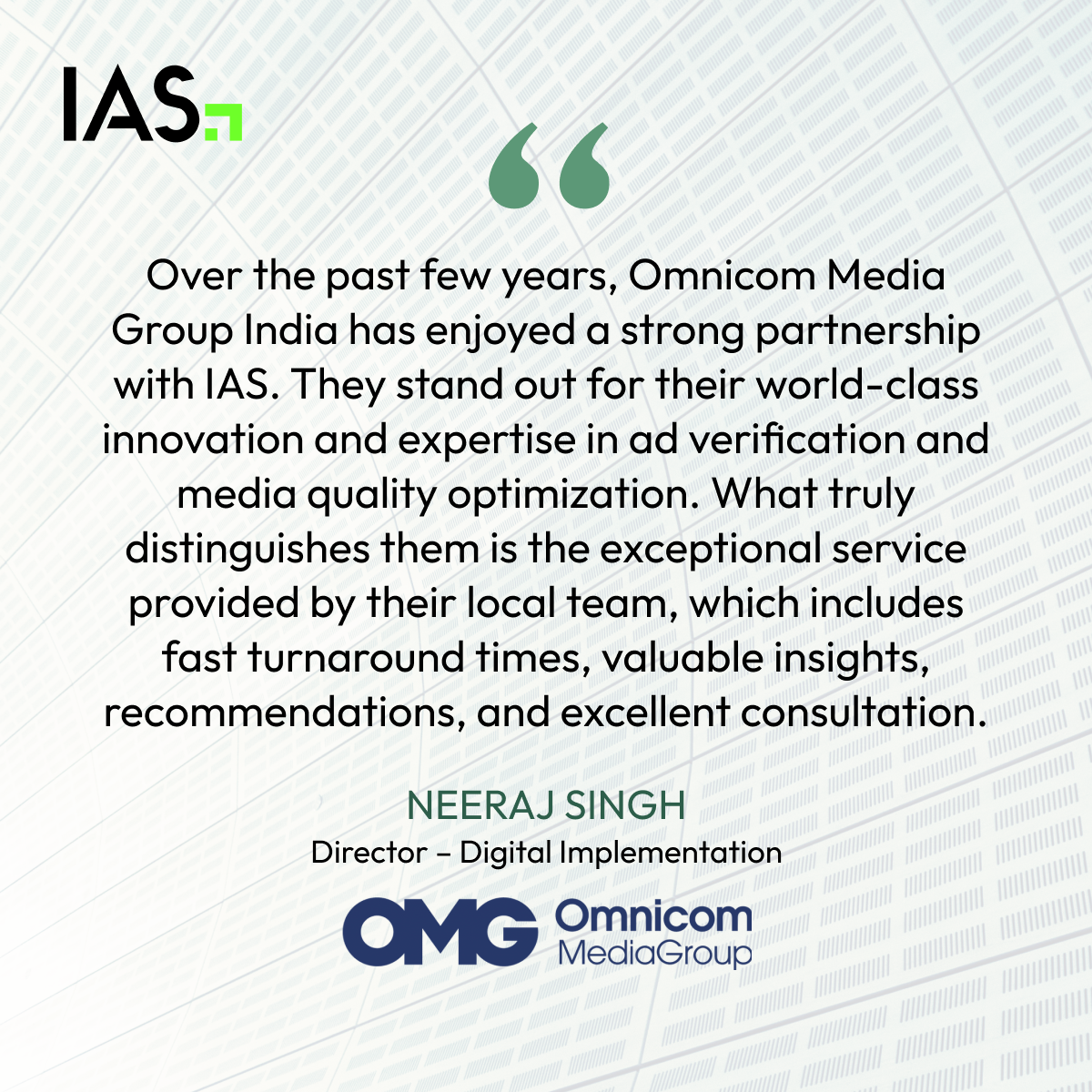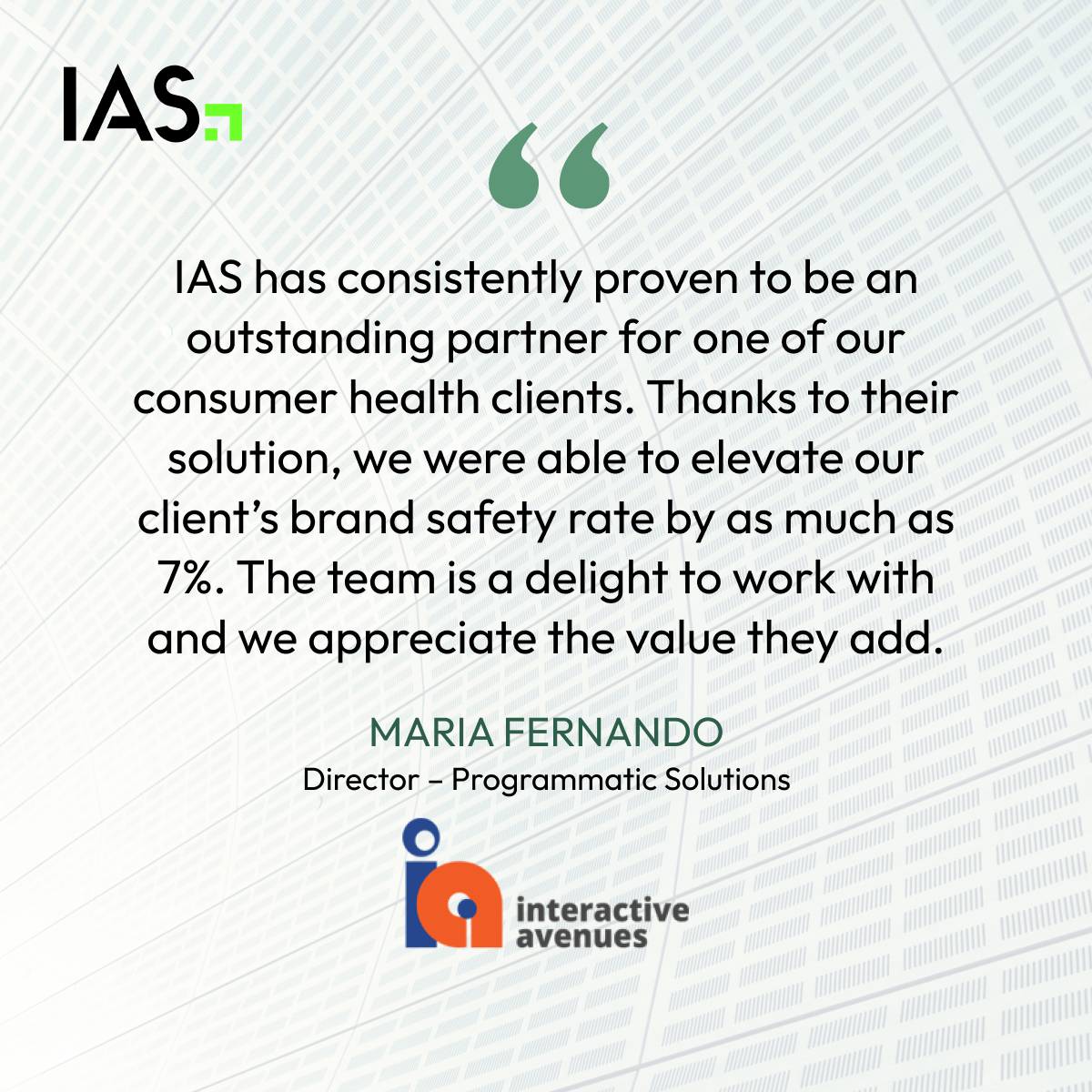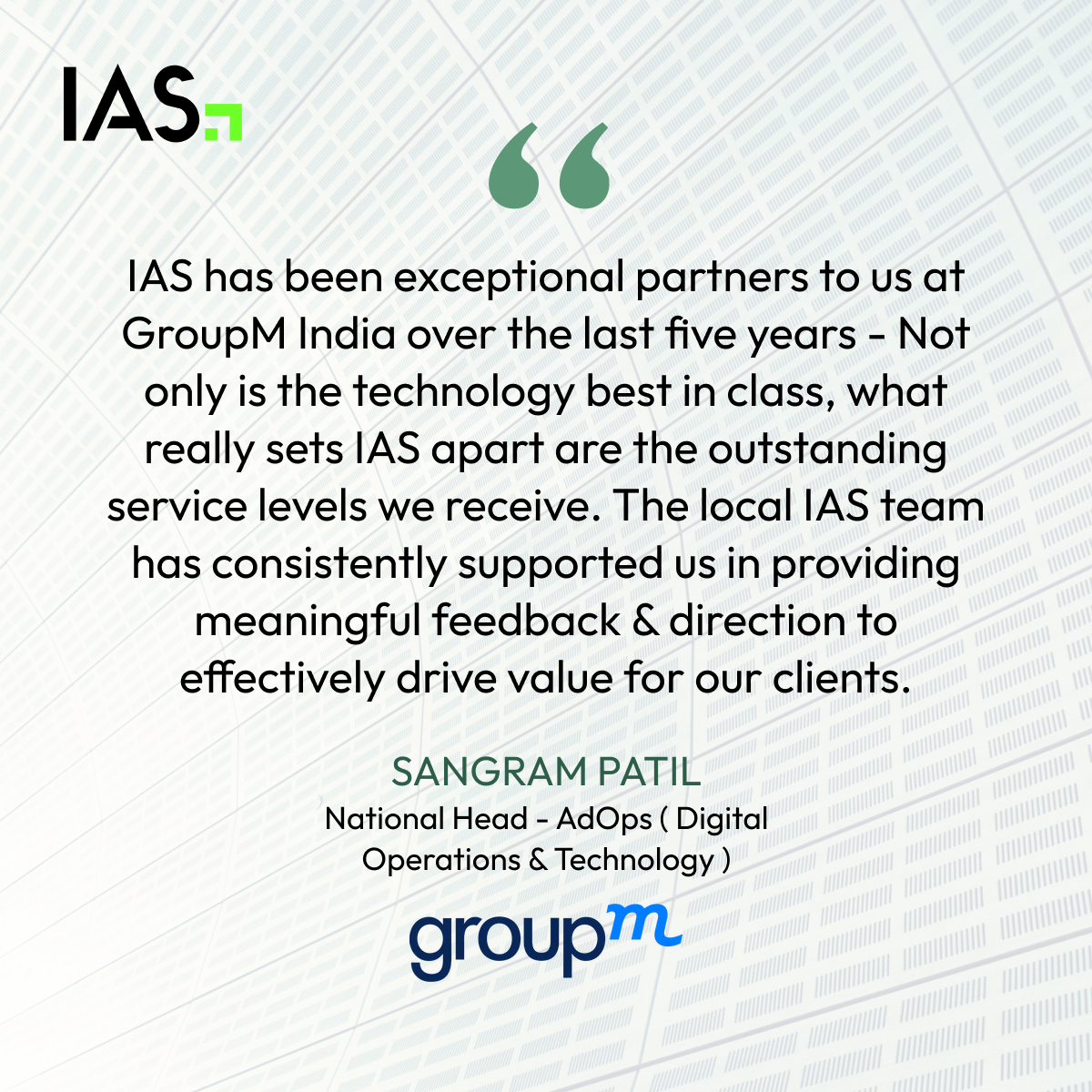Guinness beer is renowned for its clever and resonant advertising. In 1929, when the company launched its first tagline, “Guinness is good for you,” Rupert Guinness famously declared to the world that “the quality of our advertising must be equal to the quality of our beer.” Assuming Rupert believed his product was of high quality, this moment represents the beginning of a broader trend in which marketers have a laser focus on creative execution.
But is a focus on creative alone enough? Today, we accept that modern brands invest significant time and resources to create their identity and to connect with their audiences through marketing messages. Digital media is a key component to these efforts, yet in digital advertising, nearly 1 in 10 ad impressions are surrounded by unsuitable or inappropriate content. You might be finding yourself saying, ‘Ok, so what!?’
Let’s take a moment to unpack the role of environmental context, starting with the idea of ‘brand safety.’ Tony Marlow, our CMO, recently moderated a panel on this topic during New York’s Advertising Week. The panelists, which represented brands, publishers, agencies, and a biometric research company, unanimously agreed that the notion of ‘brand safety’ is about keeping ads away from the types of content that is universally deemed as unsavory. “No one wants their ad near terrorist violence or explicit adult content, brand safety is the floor,” said one panelist.
In other words, brand safety is about actively working to prevent possible negative associations to a brand due to the potentially harmful influence of undesirable adjacent content.
Not to mention that the stakes are high when we talk about keeping a brand safe. A given brand’s image may have been carefully crafted over the years, only to be destroyed for a consumer in the milliseconds it takes for a display ad to render next to the ‘wrong’ content. This damage can spread further in the time it takes to snap a screen grab and post it. So, what happens next? The digital version of guilt by association: your brand now appears to represent something that it probably does not.
This logic around brand safety is not just a guess—we have the evidence to back it up. Biometric research conducted by Integral Ad Science (IAS) and Neuro-Insight show that people respond to the entire context surrounding an ad impression rather than just a single component of it. Real-time brain scans revealed that ads that appear next to high quality content are shown to be more likable than the same ads in low quality environments. The high quality environment means ads are cognitively processed more deeply and produce higher levels of activation in the areas of the brain responsible for long-term memory.
This is the notion of brand suitability: finding more places that are suitable for your brand in an effort to get better outcomes.
Time to consider not just “safe” but “suitable”
Brand suitability considers the meaning, context, and potential implications of online content, specific to an actual brand’s needs. Brand suitability is about much more than avoiding ad placements alongside obviously inappropriate content—it’s about identifying the places that work for you and your brand.
For example, the content adjacency that might be suitable for a children’s toy brand are likely to be wildly different from those contexts that are appropriate for an alcohol brand. At IAS, we recognize these situations and perceive them to exist on more of a spectrum, depending on an individual brand’s ethos. It’s more important than ever to ensure digital messages appear in suitable environments, not solely to avoid risk but to also effectively reach the right consumers.
Getting the most out of connecting with a target audience requires an understanding of a brand’s unique image and message. Those promoting cars, for instance, will want to avoid content aimed at children and seek out content curated for working professionals to increase the relevancy of the car ads around appropriate and engaging content. Marketers can work with partners to determine what suitability means for their specific brand, aligning their definition with brand values, and actively target these environments.
Neurological evidence proves an ad’s environment has a dramatic impact
We’re leading the charge in the move from brand safety to suitability and our efforts are backed by the latest biometric research. This year, we released The Halo Effect, which shows neurological evidence that an ad’s environment has a dramatic impact on how people react to the ad. The results showed ads that had been viewed in high quality mobile web environments were perceived 74% more favorably than the same advertisements seen in low quality context.
The biometric research demonstrates that people respond to the entire context of an ad impression rather than just a single component of it, generating a very strong positive halo effect for ads that are seen in high quality environments. Advertisers, publishers, and consumers benefit from a focus on brand suitability by increasing campaign effectiveness and streamlining the overall consumer experience. At the same time, The Halo Effect reinforces the fact that brand suitability will require a shift from all stakeholders in the industry. Advertisers need to clearly spell out their brand suitability requirements without limiting scale, while publishers should actively work with brands to understand and meet their suitability thresholds.
Industry embraces brand suitability
Suitable content isn’t just for high-level advertisers; an entire company must change gears to align themselves with their company’s brand suitability model. In a recent CNBC interview, Chief Brand Officer of P&G, Marc Pritchard, shared that they are putting in the effort to reinvent advertising from mass clutter with too many annoying messages to useful and interesting brand content consumers will actually look forward to.
The conversation is evolving from the black and white binary focus of brand safety to the more nuanced and bespoke brand suitability. In today’s digital landscape, we are scaling successfully through the likes of programmatic—now we need to focus on quality. The first goal will always be safety, but the close second should be to appear in brand-safe environments at scale and in a suitable context.
Originally published in Indonesia by Marketing-Interactive.com on November 11, 2019.
 Share on LinkedIn
Share on LinkedIn Share on X
Share on X


